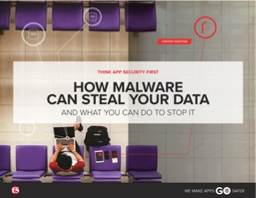How Malware Can Steal Your Data
As applications drive business, more and more valuable data is accessed and exchanged through them.
Cybercriminals attempt to compromise your apps with schemes like social engineering, malware writing, botnet herding, credit card fraud, credential laundering, trading in stolen digital goods, and selling corporate intellectual property—all intended to generate increasing returns.
In a world of different types of criminals with varying skill levels, time commitments, resources, and specializations, there's only one constant: attackers have their eyes set firmly on your apps and the data behind them—and they're using malware to steal it.
To find out more download now!
Read More
By submitting this form you agree to F5 contacting you with marketing-related emails or by telephone. You may unsubscribe at any time. F5 web sites and communications are subject to their Privacy Notice.
By requesting this resource you agree to our terms of use. All data is protected by our Privacy Notice. If you have any further questions please email dataprotection@techpublishhub.com
Related Categories: Applications, Authentication & Access Systems, Data Loss Prevention (DLP), Data Recovery, Disaster Recovery, Email, Email Security, Endpoint Security, Event Management, Firewall, IT Security, IT Threats & Vulnerabilities, Log Management, Malware, Mobile Devices, Mobile Security, Network, Network Security, SAN, Security Management, Security Solutions, Server, Software, Spam, VPN


More resources from F5

API Security Best Practices
Application Programming Interfaces, or APIs, were developed to streamline the way digital ecosystems communicate and interact with each other. At t...

OWASP Top 10
The nonprofit Open Web Application Security Project (OWASP) works to improve the security of software, web applications, and APIs. Since 2003, the ...

Celent report: Supporting Financial Services ...
The past 18 months have seen financial institutions get serious about public cloud use. The pandemic has led firms to accelerate their digital fina...